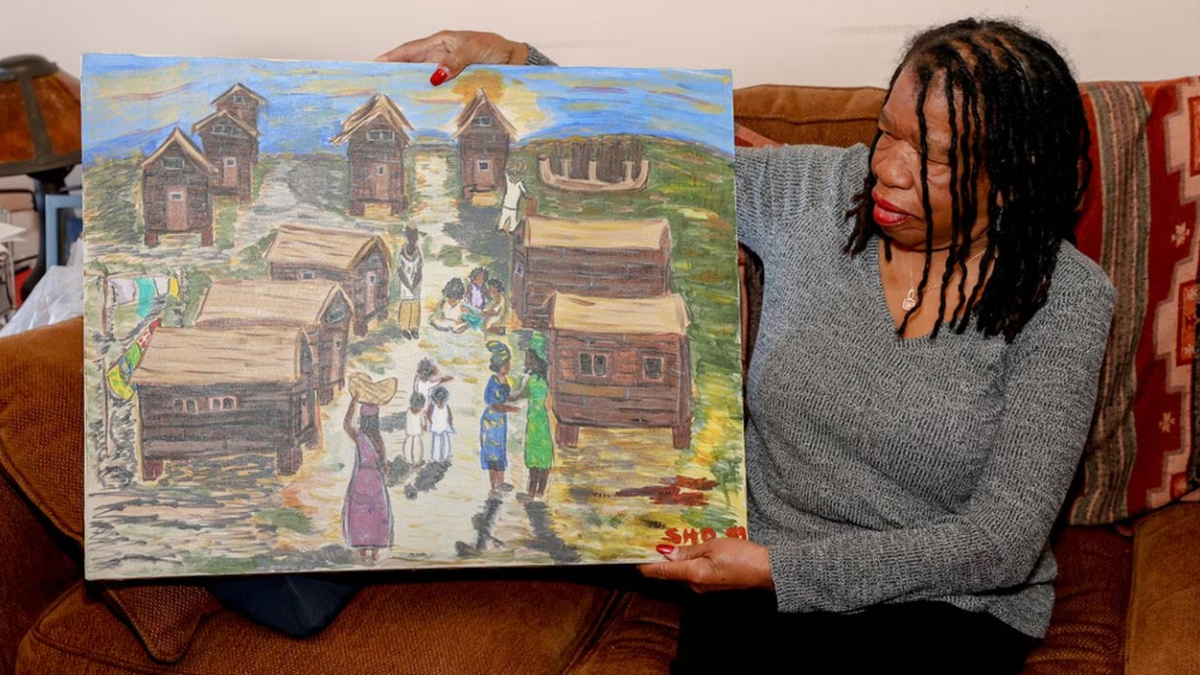Major step in Sandy Ground’s rebound: Non-profit status is restored

STATEN ISLAND, N.Y. -- Sandy Ground -- the oldest free Black community still inhabited by descendants of its original settlers -- inched one step closer to preserving its place in history when its leadership was able to recently reclaim its non-profit status.
Settled in the 1820s, the historic settlement, which exists inside the Staten Island community of Rossville, is run by the Sandy Ground Historical Society. The group’s home-base, located at 1538 Woodrow Rd., is a museum housed in a white weathered high-ranch home. Here lies two centuries worth of rich culture – one that is a significant part of Staten Island, New York and American history.
In recent years, however, Sandy Ground has faced many challenges, including the deterioration of its museum, which is uninhabitable at this time due to interior damage caused by flooding. And the structure also is in great need of a new roof.
In addition, the Historical Society is on the hunt for a new executive director, and its leaders need to raise much-needed funding to revitalize its operations.
But the future recently got a little brighter when the Historical Society’s 501c3 non-profit status was restored after lapsing in recent years.
“With our 501c3 reinstated, this now puts us in a position to receive funds and apply for grants,” said Julie Moody Lewis, president of the Sandy Ground Historical Society.
After the Advance launched a series called “Rebuilding Sandy Ground” in February highlighting the community’s challenges, there has been an outpouring of support from Staten Islanders offering various services to help get the Historical Society back on track. Now, this historic community, that just months ago appeared to be on the verge of obliteration, holds a promising future outlook.
“We are in the process of working with other institutions that have offered their support to help us to rebuild and do the internal things we need, like helping us look for a new executive director and develop the Historical Society’s board,” said Moody Lewis.
“We recognize that we are now in a whole different age. And we are grateful for all the organizations and people we are now working with to rebuild the museum and restructure our board,” she added.
COMMUNITY SUPPORT
Among the many groups that have reached out to help Sandy Ground is the South Shore Rotary.
“This is very exciting news,” said Lynne Persing, chief operating officer of the South Shore Rotary Club, upon learning the Historical Society’s non-profit starts was restored. “Congratulations to Julie Moody Lewis and her team as I know they have been working very hard to recreate a lot of the lost documents. Hopefully, things will go smoothly now and plans can be made to start rebuilding the museum. Everyone at the South Shore Rotary is ready to help in any way we can.”
One of the ways in which Persing helped Moody Lewis was by putting her in touch with Mona Ghanem, vice president and branch manager of Northfield Savings Bank in Great Kills.
“I had to dig into the state information and we got them [the Historical Society] information and a new application,” said Mona Ghanem. “Sandy Ground is a big part of our history, and it needs to be preserved for future generations.”
After that, Rep. Nicole Malliotakis (R-Staten Island/Brooklyn) contacted the IRS on the Historical Society’s behalf to have the application expedited.
“Sandy Ground is an important historical site for Staten Island and the entire nation,” she said. “The organization receiving its 501c3 is critical and required by law for them to receive donations and government funding to rehabilitate their buildings, and put the necessary operation in place to run the historical society. Now that they’ve completed this important first step, we can look for the funding options to preserve this historical treasure.”
SANDY GROUND HISTORY
Settled in the 1820s, Sandy Ground is the third recorded community in New York where African-Americans owned land, according to city Landmarks Preservation Commission (LPC).
The first recorded Black landowners in Sandy Ground were Moses K. and Silas K. Harris, brothers from New Jersey who initially came to the area to work as gardeners in the 1820s. They also owned property in Manhattan, according to Moody Lewis. Early on, the community was most known for its fertile strawberry crops that would yield an abundance of the fruit.
In the 1850s African-American oystermen from Maryland became attracted to the area because of the abundant oyster beds of the Raritan Bay. During the 19th and 20th centuries, the community became self-sufficient and thrived as it housed a range of professionals and tradesmen, from blacksmiths and store owners to teachers and midwives. Soon, Sandy Ground became a community where African-Americans found prosperity and freedom from persecution.
Today Sandy Ground is tucked away amid dense housing and paved roadways that serve as a main bus route for two public schools. But, if you look closely while driving along Woodrow or Bloomingdale roads, you can see the remaining homes and landmarked structures in Sandy Ground that still exist today.
There are several properties in the community designated New York City landmarks: two tan clapboard Baymen’s cottages on Bloomingdale Road, which are 120-year-old-plus homes once owned by the prosperous oystermen who came to the community in the 1850s; the A.M.E. Zion Church, built on Bloomingdale Road in 1897; the Rev. Isaac Coleman and Rebecca Gray Coleman home at 1482 Woodrow Rd.; and the Rossville A.M.E. Zion Church Cemetery on Crab Tree Avenue — a peaceful respite where both weathered and newer headstones tell the story of the community’s pioneers who once lived, worked and thrived there.